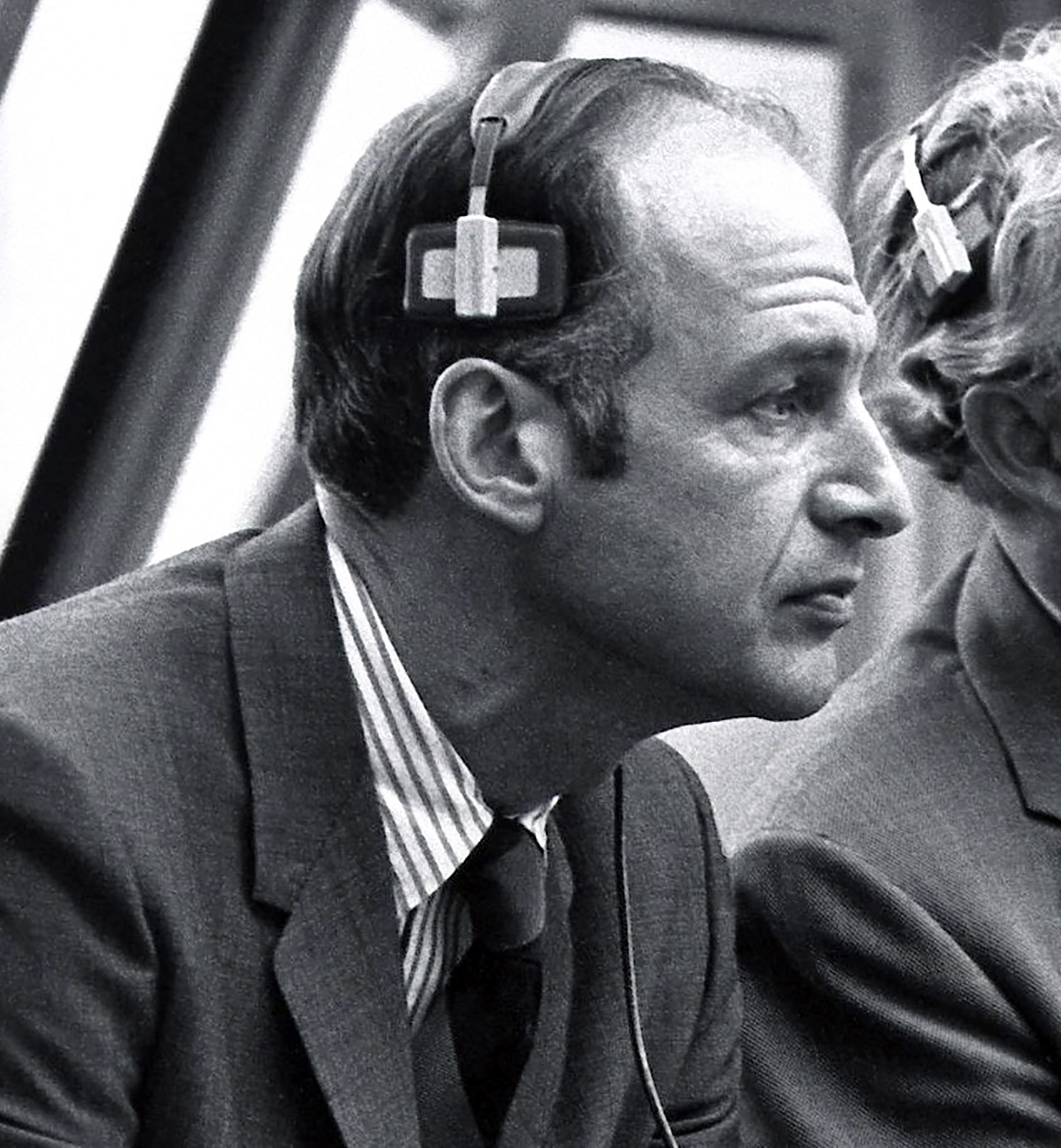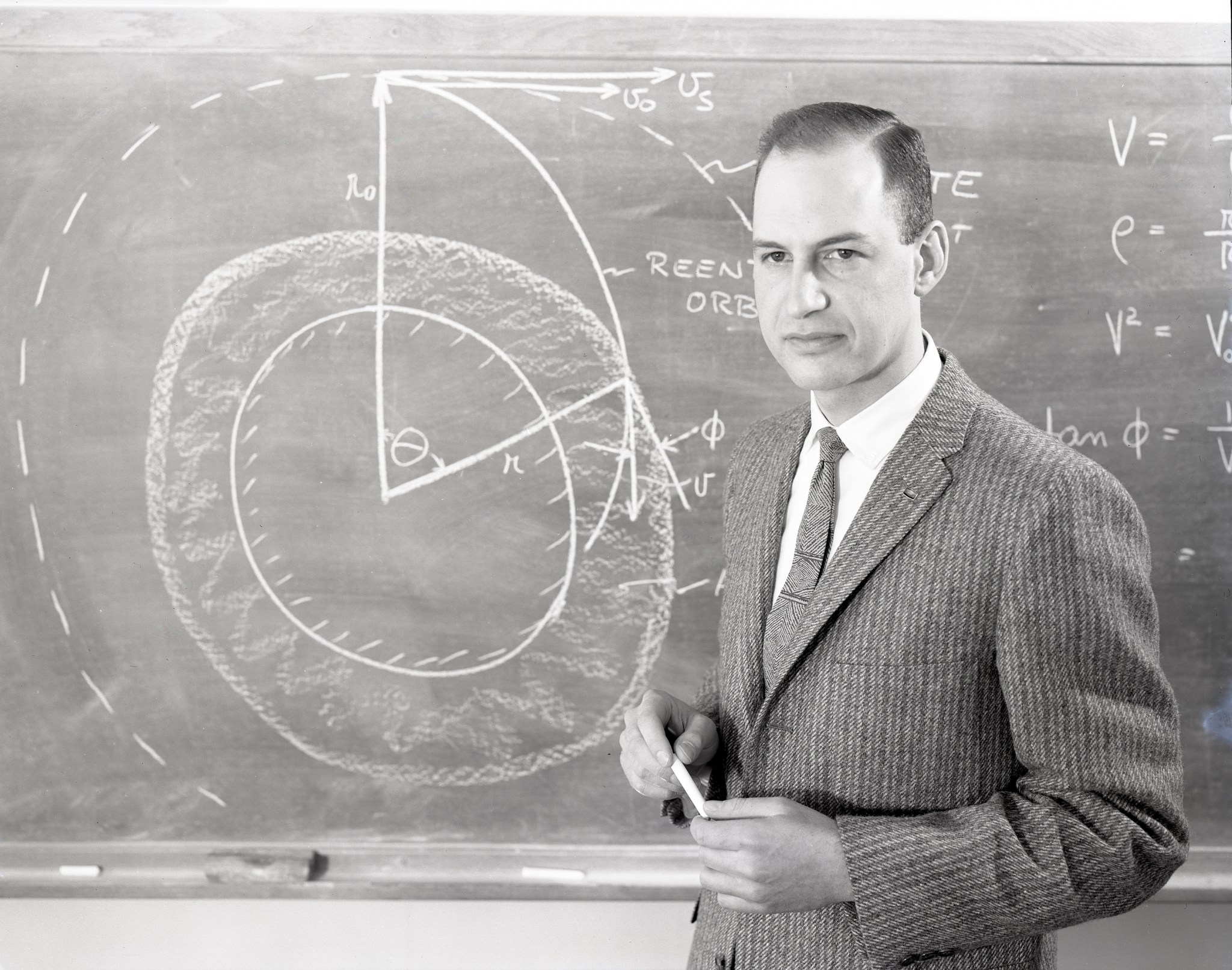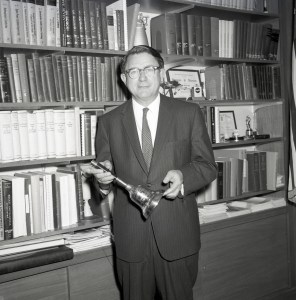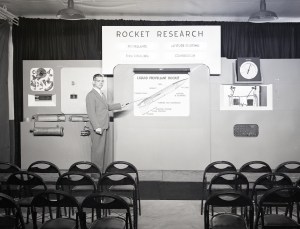George M. Low, formerly of the Lewis Flight Propulsion Laboratory (now NASA Glenn), was integral in making the decision to send humans to the surface of the Moon. In the fall of 1960, Low led a team that worked out the logistics and requirements of a lunar landing. These plans ultimately served as the template for the Apollo program. Low continued to drive the Apollo effort until the first landing in July 1969.
Low began his career in 1949 as an aeronautical engineer in the Supersonics Division of the Lewis laboratory in Cleveland, Ohio. Low studied high-speed aerodynamics, boundary layer transition and heat transfer in the lab’s three small supersonic wind tunnels. He was named chief of the Fluid Mechanics Section in 1954 and selected to lead the Special Projects Branch in 1956. The latter group’s work included new space-related issues such as reentry heating, hypersonics and logistical space mission planning.
In May 1958, as the nation responded to the Soviet Union’s launch of Sputnik, Lewis Associate Director Abe Silverstein transferred to headquarters to serve as director of Space Flight Programs for the new U.S. space agency. With the formal institution of NASA in October 1958, Silverstein handpicked Low and other Lewis managers to assist establishing the space program.
In 1959, Low participated in a committee that analyzed future space missions for the agency. Despite Low’s strong advocacy for a Moon landing, the group ultimately decided the next human space missions should be lunar orbital flights. NASA unveiled the program, named Apollo, in late July 1960. It was stated that the circumnavigational flights would eventually lead to a space station and lunar landing. Low, however, remained intrigued by a near-term lunar landing. In October 1960, Silverstein approved Low’s decision to gather former Lewis employees, Eldon Hall and John Disher, along with Oran Nicks to investigate the requirements and options for landing humans on the Moon.
On February 7, 1961, less than three weeks after the inauguration of President John Kennedy, Low’s team presented their report with cost and time estimates. The group predicted that NASA could place a three-person crew in Earth orbit in 1965, in lunar orbit in 1967, and land them on the Moon in the 1968-1969 period.
Over the next few months, however, the new administration faced a series of setbacks and international challenges, including Yuri Gagarin’s April 12 orbital space flight. President Kennedy solicited ideas for technologically surpassing the Soviet Union. Low’s detailed report gave NASA officials the confidence to suggest that a lunar landing provided the best opportunity to beat the Soviets in space. On May 25, 1961, President Kennedy announced the decision to place Americans on the Moon within the decade, and the Apollo program, as we know it, was born.
Low oversaw the redesign of the Apollo spacecraft after the Apollo 1 fire in 1967 and made the decision the following year to accelerate the schedule by sending the first crewed spacecraft around the Moon in December 1968. After the success of the Apollo 11 mission in 1969, Low was appointed NASA Deputy Administrator and retired in 1976.
To learn more about the Apollo missions and NASA’s celebration of the 50th anniversary, visit the Apollo 50th Anniversary website.
Robert S. Arrighi
NASA’s Glenn Research Center

































